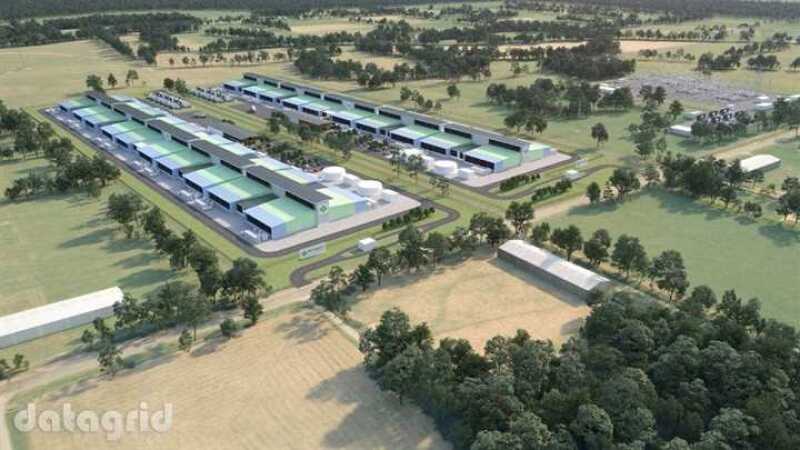The news comes off the back of an announcement made by Datagrid New Zealand who plans to build a new $500 million (A$700 million) hyperscale data centre is South Island, New Zealand. As part of this new project Datagrid plans on building two new subsea cables.
The first will be a 2900km system connecting Invercargill, New Zealand to Sydney and Melbourne, Australia. The second will connect to Hawaiki Cable’s landing point at Mangawhai Heads, north of Auckland. It will then have onward connectivity to Auckland, Wellington and Christchurch.
There is also the potential for branch cables to the Chatham Islands, to connect not only its citizens but also the Rocket Labs’ satellite-tracking station, as well as to Stewart Island and the US and New Zealand bases in Antarctica.
The plan is for the subsea cables land along the 26km stretch of Oreti Beach, just outside Invercargill.
Born the brainchild of Hawaiki Cable founder, Remi Galasso and CallPlus co-founder Malcolm Dick, Capacity Galasso about this budding ecosystem and what it will bring to the region.
So let’s start at the beginning, what makes South Island, specifically Invercargill the ideal location for this project. At the time of announcement, it was the cool climate and renewable energy that catapulted New Zealand to the top of the list, but it there’s more to it than that.
“Another important driver is obviously New Zealand’s enviable quality of international and domestic connectivity, and I am proud to say that Hawaiki Cable - New Zealand’s largest international submarine cable - has really been a game changer,” explains Galasso.
“New Zealand is just a fantastic country. It is ranked world number one for both ‘ease of doing business’ and ‘political freedom’. It is also a country founded on and driven by innovation, where technology companies and entrepreneurs from all over the world are actively encouraged to locate.”
On a personal note, Galasso says that Queenstown (north west of Invercargill) “will always be home for me” adding that it is “One of the most beautiful places in the world” with massive potential start-ups to blossom in calling it “New Zealand’s answer to Silicon Valley”.
Borrowing from his experience with Hawaiki Cable, Galasso says that the growth of traffic on the Australia/New Zealand - US route has grown expotentially since its launch in 2018 and has only been accelerated due to the Covid-19 pandemic. He now predicts that “this growth is due to at least three factors”.
Firstly, he says that the 620MW capacity of the current Australian data centre market, is expected to reach 1500MW by 2026. Adding that “Auckland is following the same trend, with Microsoft recently announcing hyperscale projects there”.
Secondly, he says that geopolitical tensions throughout Asia have “created uncertainty for many organisations, raising the importance of the Sydney - US route for supporting high-performance and secure transmission”.

Lastly, Galasso says that the new subsea cables between Singapore, Perth and Sydney have boosted Sydney - US traffic, “creating a Great Southern route linking Singapore to the US and bypassing the increasingly contested South China Sea”.
When news of the $500 million Datagrid project broke, it was mentioned that the company is working to secure one of the ‘big US cloud computing giants’ as anchor tenant. This led us to question how much significant these big tech players are in such infrastructure projects? Could we even so far as to say that these types of projects can no longer take place without them?
“Big OTTs are clearly driving the current demand for both hyperscale data centres and submarine cables,” explains Galasso.
“US-based cloudco’s are becoming a prerequisite these days for hyperscalers because they are basically the only ones able to commit to large capacity over 10MW. And of course, there’s now China’s Alibaba Cloud, which is playing in the same division.”
But it does make sense, OTTs have already established an appetite for renewable energy and power efficiency making Invercargill “a fantastic location for cost-effective data storage”, according to Galasso.
Also, described as the first zero-emission hyperscale data centre in the Austrailia/New Zealand region, “Datagrid will support hybrid-colocation solutions, meaning competitive options for SMEs right up to global OTTs”.
In support of this impressive hyperscale data centre, Galasso, Dick and Datagrid CEO Ceorges Krebs, are also building out its subsea assets at the same time.
“In order to guarantee flawless connectivity to the Datagrid data centre, we will build a new international cable between Invercargill, Sydney and Melbourne that will bring NZ and Australia even closer together,” explains Galasso.
The system will feature two landings in Australia and two landings in New Zealand and has been designed with latency of under 25 milliseconds. Glasasso says they will also build “a domestic festoon” connecting Invercargill to the cities of Dunedin and Christchurch.
“We are also exploring possibilities for linking the Antarctica bases of Scott and McMurdo to Invercargill,” he says.
Will all eyes on the new and exciting project is should come as no surprise that in Galasso’s own words, “Datagrid is definitely gaining serious traction in the market”.
“The funny thing is that many in the industry were completely oblivious to Invercargill’s exciting potential in terms of renewable energy and climate,” he adds. “They probably thought it was the end of the world, but with this new cable project Invercargill will actually be much closer to Sydney than Perth in terms of communications.”
Due for commercial launch in 2023, the next stages of development for the project includes finalising site acquisition, after which Datagrid will seek resource consent.
“We are also working on project funding and customer pre-commitments. Finally, we are moving full speed ahead on the new subsea cable,” says Galasso.
But as all these things are being done in tandem, Galasso jokes that its “keeping our CEO Georges Krebs quite busy”.






